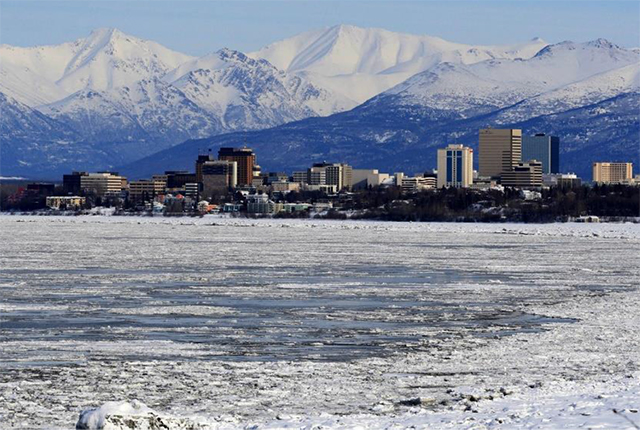Scientists track faults ready to trigger earthquakes
22/06/2020 By BGS Press
Researchers at the British and US geological surveys have developed a new method for identifying risky faults with high potential to generate earthquakes.
Shallow earthquakes occur within the top 30 km of the Earth’s crust that is crossed by thousands of fault lines.
Understanding which faults are likely to slip is the key for anticipating large aftershocks.
In new research, scientists Margarita Segou and Tom Parsons use visualisation techniques normally applied in chromosome sequencing to illustrate fault potential, with hundreds of thousands of stress values used to characterise fault potential.
The novel method, published in the Bulletin of Seismological Society of America, shows that small-scale, local faults have a more significant role in earthquake triggering mechanisms than previously thought.
The method shows that, following a large earthquake, the stresses in the crust responsible for aftershocks are influenced by the combined effects of both pre-existing tectonic stress, present in the crust before the mainshock, as well as short-lived stresses imparted by the mainshock itself.
Analysis of an earthquake sequence known for the complex nature of aftershocks — the 2010 magnitude 7.2 earthquake at El Mayor-Cucapah in California — shows that these did not occur on large, dominant faults that were previously considered the most risky.
Instead, scientists found that pre-existing, small-magnitude fractures, previously thought to be insignificant, offer important clues.
When combined with theoretical stress estimations, these small ruptures offer the most reliable indication of how the Earth’s crust might break.
Surprisingly, the most efficient descriptor for high-hazard fault identification comes from combining theoretical estimations of stress with existing geometries of pre-existing, but small magnitude, fractures.
These findings are critical for understanding which fault geometries are likely to host aftershocks in the future, and potentially trigger larger earthquakes.
Margarita Segou, BGS Seismologist and lead author.
The method provides a physical explanation for 89 per cent of the observed aftershocks, whereas standard methods could only explain just 18 per cent of these occurrences.
The research has prompted scientists to look further at the interaction between large, typical earthquakes and slow earthquakes in triggering future events.
Slow earthquakes, also known as slow slip events, are small and can last days or even years. As they do not make the ground shake they can only be detected by geodetic networks, meaning that our knowledge of their occurrence is limited to the last decade or so.
Analysis of stresses related to slow slip events and large earthquakes in Alaska, before the 2018 magnitude 7.1 Anchorage earthquake, reveals the potential of these phenomena to promote this particular type of faulting.
The Anchorage earthquake occurred in a bending part of the down-going slab beneath south-central Alaska, but results published in Geophysical Research Letters by the same authors show that it was encouraged by incremental build-up of stress effects from slow slip, which loaded the Anchorage fault prior to the 2018 earthquake.
This loading process left its signature in the Earth’s crust by triggering small-magnitude seismicity for more than a decade just above the location of the slow-slip event.
We start to see the long-lasting effects of slow-slip events near Anchorage begins years before the 2018 earthquake.
Understanding the physics of the interactions between earthquakes and neighbouring faults from seconds to several years, is critical for providing robust forecasts for the next decade.
Margarita Segou.
For further details or to arrange media interviews please contact:
Sarah Nice, British Geological Survey Press Office, Keyworth, Nottingham, NG12 5GG
Office: +44 (0)115 936 3605
Mobile: +44 (0)7989 115 657
Twitter @Sarahnice1
Notes for Editors
Links to the research are available to view:
Research in Bulletin of Seismological Society of America: https://tinyurl.com/ybn76935
A detailed commentary about the implications of these findings in future research is recently published in Seismological Research Letters here: https://tinyurl.com/y9kcr6g6
Research looking at slow slip events in Geophysical Research Letters here: https://tinyurl.com/yb9x48dj
Available for interview: Margarita Segou, BGS
Images free for media use with this acknowledgement: British Geological Survey © UKRI
British Geological Survey
The British Geological Survey (BGS) is a world leading applied geoscience research centre that is part of UK Research and Innovation (UKRI) and affiliated to the Natural Environment Research Council (NERC). BGS core science provides objective and authoritative geoscientific data, information and knowledge to inform UK Government on the opportunities and challenges of the subsurface. It undertakes national and public good research to understand earth and environmental processes in the UK and globally. The BGS annual budget of approximately £60 million pa is funded directly by UKRI, as well as research grants, government commissions and private sector contracts. Its 650 staff work across the UK with two main sites, the head office in Nottingham and Lyell Centre, a joint collaboration with Heriot Watt University in Edinburgh. BGS works with more than 150 private sector organisations, has close links to 40 universities and sponsors about 100 PhD students each year. Please see www.bgs.ac.uk.



